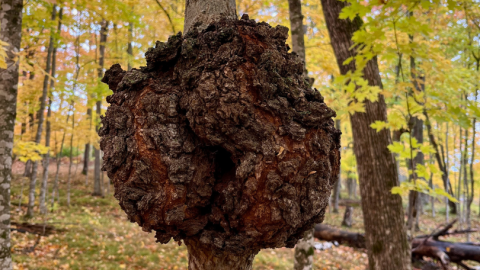Please share your observations, nature tales and insights! Send them to me (cmitchell@kaxe.org), John Latimer (jlatimer@kaxe.org), or text us at 218-326-1234.
Fort River Elementary School in Amherst, Massachusetts

Jonah: “Hello from Ms. Paul and Ms. Fisher’s fifth-grade phenology class. This is our last recording for the year, because June 20 is the last day of school.”
Bobby : “On Tuesday, June 11, the day length was 15 hours 14 minutes and 25 seconds. Plus, the high was 72 and the low was 52 degrees. We also looked ahead and on Thursday, June 20, the high is supposed to be 99 degrees but the ‘real feel’ is 103 degrees in the sun.”
Natalia: “Our class has noticed that summer is starting to come. All of our trees have almost completed their year-long cycle and look very similar to how they looked at the start of the year. They have their green leaves, and we don’t see any buds left. We also have seen lots of fireflies flying around when the sun goes down. We have seen many more ants (including in our houses) and two kids in our class saw a spider with a white abdomen that we cannot identify.”
Casey: “Natalia’s grandma has a pear tree, and she said that the pears are growing but they’re really small. Ms. Paul saw her first blue blueberry on June 16. Also, Lyrrin saw many mayflies flying around. Strawberries are coming out, and lots of people are picking them fresh off the farms. Plus, we saw many purple flowers growing on our sage plants.”
Alex: “In addition, we pulled up some garlic mustard - which is an invasive plant species in Massachusetts - with 2 people from the Kestrel Land Trust, an organization that is trying to preserve animal habitats. The garlic mustard we were pulling up was HUGE: It was at least 4 feet tall.”
Casey: “And that's the final wrap from the Western Mass Phenology class!”
Long Lake Conservation Center near Palisade, Minnesota
This report is brought to you by AJ, Kameren, Kaiden and the campers who attended Forkhorn I Camp at Long Lake June 9-13.
"Here is our phenology report for the week of June 9-13. The high temperature was 82 degrees, the low temperature was 36 degrees.
“There were several sightings on campus of a doe followed closely by her fawn.
“We kept an eye on a snapping turtle laying her eggs, she was in her egg-laying spot for over 3 hours! We also saw 3 painted turtles, 1 loon on the lake, 1 loon on the nest, beavers, frogs and chipmunks.
“Many colorful birds were noticed; a goldfinch, bluebirds, a Red-headed Woodpecker, and Red-eyed Vireos, which are not very colorful except for their little red eye. We also saw a clutch of 3 baby robins barely fitting in their nest and looking ready to fledge.
“Monarch butterflies, monarch eggs and tiny monarch caterpillars are all on the milkweeds. The flowers in bloom are pink lady’s-slippers, wild rose, blackberries and blue flag iris. We had a great week at summer camp, and we want to remind everyone to unplug, get outside and LIVE CONNECTED!”
Kathleen from Crow Wing Lake
Kathleen from Crow Wing Lake sent us an email, saying “While at my cabin on Crow Wing Lake, this juvenile loon was at our dock’s end. I’ve not seen one before, and thought it relatively large. Fun to see. Phun phenology.

Season Watch Facebook feature

On the Season Watch Facebook page this week, members observed monarch caterpillars emerging near Talmoon, a Trumpeter Swan with seven cygnets in Bemidji, wild rice floating just under the surface of a river near Bemidji, and many loon chicks hatching throughout the area.
What have you seen out there? Let us know: email us at comments@kaxe.org or text us at 218-326-1234.
That does it for this week! For more phenology, <b>subscribe</b> to our Season Watch Newsletter or visit the Season Watch Facebook page.
Funding for this project was provided by the Minnesota Environment and Natural Resources Trust Fund as recommended by the Legislative-Citizen Commission on Minnesota Resources (LCCMR).
-
In this episode, co-hosts Heidi Holtan and Charlie Mitchell are delighted by Sam Guida, an expert in mysterious plant-insect interactions and former student phenologist.
-
During the Phenology Report for the week of Dec. 23, 2025, Staff Phenologist John Latimer covers subnivean tunnels, and the comparative bite force of mink and voles.







